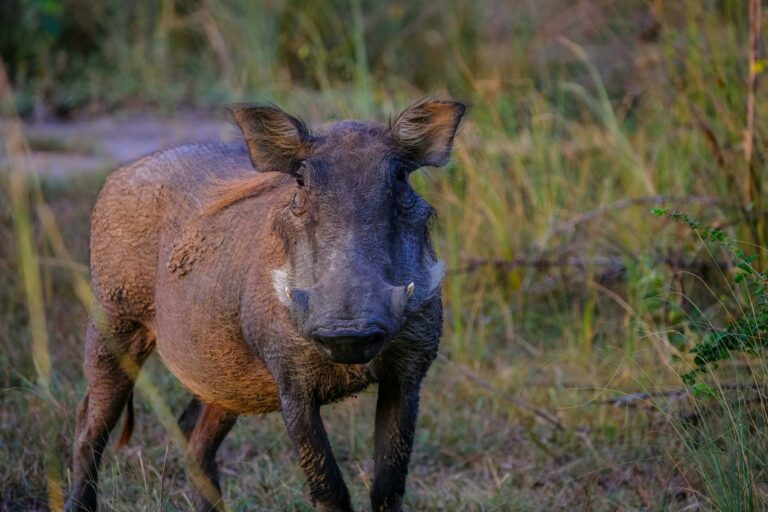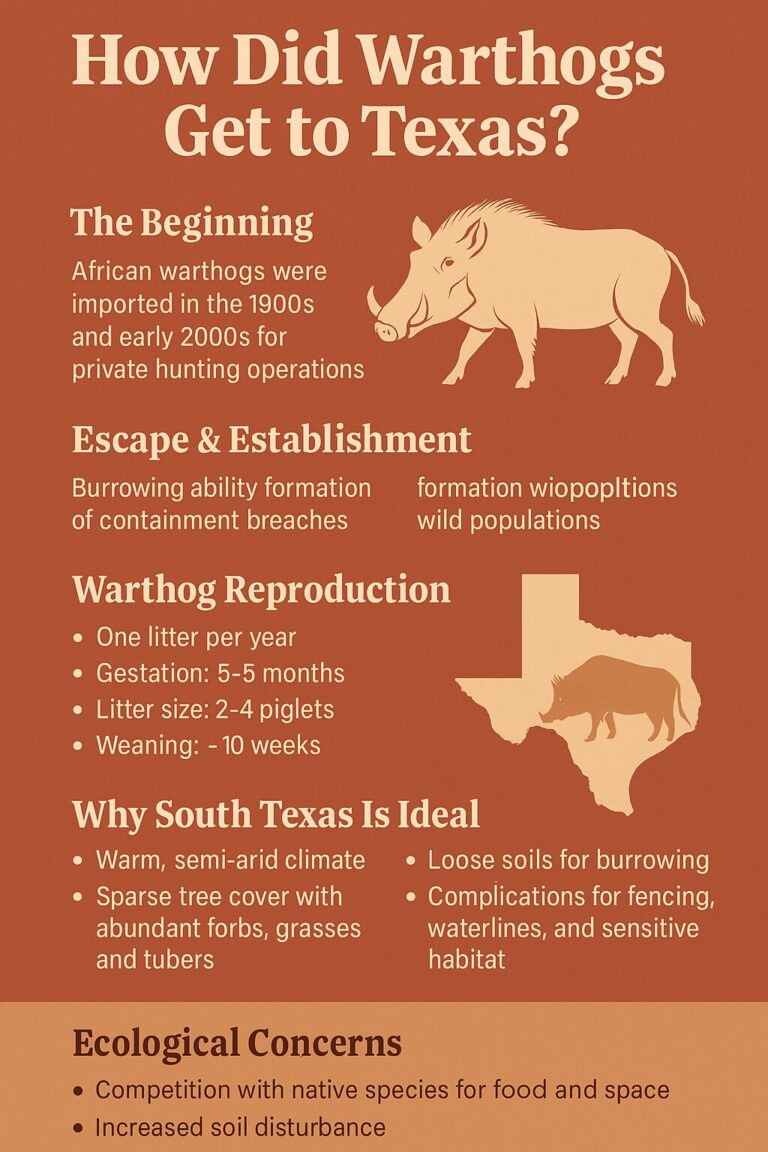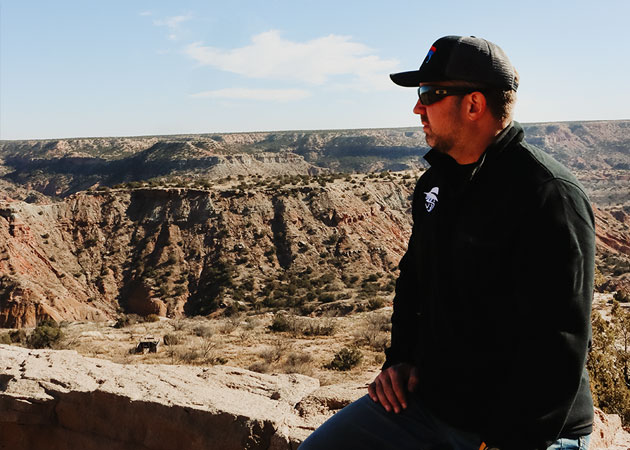
Warthogs in Texas: Where Theyre Roaming Free and Why It Matters
Once limited to the savannas of Africa, warthogs have made a surprising home in the brush country of South Texas. These tusked invaders are now roaming free across several counties—raising questions about ecological impact, management, and how they got here in the first place.
In this article, “Warthogs in Texas: Where Theyre Roaming Free and Why It Matters”we break down their spread, reproduction habits, and why Texans—from ranchers to wildlife managers—should start paying attention.
Where Are Warthogs Roaming in Texas?
Today, the core free-range warthog population is concentrated in South Texas, especially:
Zavala County (Batesville)
Additional sightings in Duval County and areas near Cotulla, Asherton, and Three Rivers
This range covers parts of the Golden Triangle of big deer country, with rugged, semi-arid brushland ideal for warthogs to thrive.
Warthogs were never released as a wildlife management plan. Most escaped from exotic game ranches—and adapted fast.
Warthog Texas Range
At James Bigley Ranches, we track warthog sightings in Texas using a crowdsourced approach, relying on public reports and comments submitted through social media. Counties are only marked on the map when multiple independent sightings from different individuals have been verified. The map is updated quarterly to reflect confirmed activity.
How Did Warthogs Get to Texas?
Texas has long welcomed exotic species for private hunting operations. African warthogs were imported for this reason—mainly for game ranches in the 1990s and early 2000s.
But the warthog’s burrowing ability became a problem. Many escaped containment by digging under fences and began forming wild populations. The first public harvests occurred around 2014–2015 in La Salle and Dimmit counties, confirming a free-breeding population in the wild.
Warthog Reproduction Rates and Behavior
Warthogs are slower to reproduce than feral hogs—but still effective enough to pose a long-term issue.
Key Stats:
Breeding: One litter per year
Gestation: ~5–6 months
Litter size: 2 to 4 piglets
Weaning: ~10 weeks, full independence by 5–6 months
Social groups: Females and young form sounders; males are mostly solitary except during mating
Compared to feral hogs (which can have multiple litters per year with 4–6 piglets), warthogs breed more slowly—but with fewer natural predators in Texas, their population can still grow unchecked.

Why South Texas Works So Well for Warthogs
The brush country of South Texas mimics parts of Africa’s landscape, offering:
Warm, semi-arid climate
Sparse tree cover and plenty of forbs, grasses, and tubers
Loose soils ideal for burrowing
Abundant wildlife water sources (tanks, creeks, troughs)
Warthogs are not cold-tolerant, which is why they haven’t expanded into Central or North Texas. Their range will likely stay limited to the southern third of the state—for now.
Ecological Concerns and Landowner Impact
Warthogs are not classified as game animals in Texas, meaning there’s no season or bag limit. However, this also means there’s little regulation or oversight. Their habits—like rooting and burrowing—mirror feral hogs in destructiveness.
Potential Impacts:
Competition with native species for food and space
Spread of soil disturbance across rangelands and food plots
Risk of spreading disease, especially in regions shared with livestock
Complications for fencing, waterlines, and sensitive habitat
Important Note: Warthogs are classified as exotics in Texas. Landowners may harvest them year-round.
Conclusion: Why Warthogs in Texas Matter
What started as a novelty import has now become a self-sustaining wild population in parts of Texas. While not yet as destructive or widespread as feral hogs, warthogs are a growing concern for landowners, hunters, and wildlife managers.
As the population expands—particularly in Dimmit, La Salle, and McMullen Counties—so does the need for better tracking, research, and potential control measures.
Whether you’re a hunter looking for something different or a rancher keeping tabs on your land, warthogs in Texas are no longer a joke—they’re part of the landscape.
Frequently Asked Questions About Warthogs in Texas
1. Are warthogs legal to hunt in Texas?
Yes. Warthogs are classified as exotic, non-game animals in Texas. There is no closed season or bag limit, and they can be hunted year-round with landowner permission.
2. How did warthogs end up in Texas?
Warthogs were originally imported for exotic game ranches during the 1990s and early 2000s. Some escaped by burrowing under fences and eventually formed wild populations, primarily in South Texas.
3. What counties in Texas have wild warthog populations?
The most confirmed free-range warthog sightings and harvests have occurred in Dimmit, La Salle, and McMullen Counties, though their presence may be expanding slowly in surrounding areas.
4. Do warthogs reproduce like feral hogs?
Not quite. Warthogs reproduce slower than feral hogs, typically having one litter per year with 2–4 piglets. However, with few predators, their population can still grow unchecked.
5. What damage do warthogs cause on Texas ranches?
Warthogs can root up vegetation, damage fencing and waterlines, compete with native species, and disturb sensitive habitat—similar to the impact of feral hogs.
6. Will warthogs spread across the entire state?
Unlikely. Warthogs are not cold-tolerant, so their range is expected to stay limited to the warmer brush country of South Texas—at least for now.



